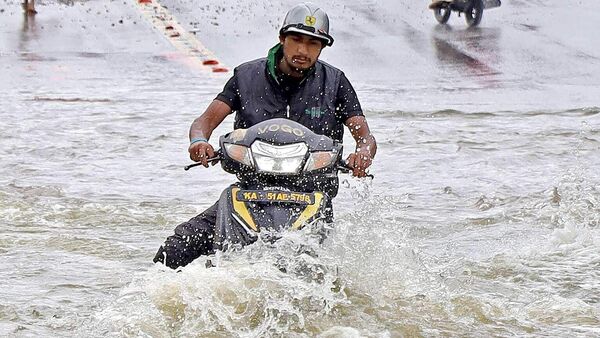A few hours of rain earlier this week in Bengaluru led to severe flooding in key city corridors, leaving citizens worried about what will happen when the monsoon hits later this month. The rainy week last September, when the infrastructure of the Indian startup capital collapsed and people’s lives were turned upside down, is still fresh in our memories. In a May 31 report titled “Bengaluru Urban Flood,” real estate consultancy Knight Frank India suggested solutions that could prevent this nightmare from repeating itself.
Rainwater sewers need to be rehabilitated
In his report, Knight Frank suggested that Bengauru needed a stormwater drainage (SWD) master plan and alternative flood control techniques. The city was said to have to build about 400 miles (658 km) of sewers. In addition, approximately 840 km of the existing primary storm sewers need to be repaired and renewed.
The estimated investment costs for this would be approx ₹2,800 crore, it said. This includes the construction of an additional 400 miles (658 km) of sewer lines at a cost of ₹2 crore up ₹2.50 crore per km, cleaning and repairing existing drains for approx ₹65 lakhs up ₹67 lakh per km and one more ₹300 crore up ₹400 crore to improve the condition of the city’s lakes and for maintenance.
In the city’s SWD system, interconnected primary and secondary drains help carry excess stormwater from one lake to another. However, increasing construction activity has compromised this connection between the lakes and shortened the length of the drains.
“The Municipality’s Stormwater Drainage Improvement Program (Bruhat Bengaluru Mahanagar Palike) has a budget of ₹3,000 crores. The need of the hour is to comprehensively address the problem of stormwater drainage. Clearly, [the problem] was the lack of capacity and willpower within government to implement this in a targeted manner. The entire planning and implementation should take about three years and must be carried out by a professional engineering company. We have also proposed value-added financing to incentivize government and other stakeholders,” said Rajeev Vijay, Managing Director of Government and Infrastructure Advisory at Knight Frank India.
Value-added financing
When the government invests in infrastructure, there is usually an increase in the value of adjacent parcels, among other benefits. According to Knight Frank, the government can then say it wants to reclaim some of that value from beneficiaries if public investment improves infrastructure and thereby increases property values.
The VCF route can include various instruments such as B. A land use change fee, a land value tax, an improvement levy, a development fee, the transfer of development rights, a premium for the relaxation of land area index and land area ratio, vacancy. Property tax, tax increase funding and easing of zoning for land acquisition.
Effects on real estate
Due to the huge influx of people, the percentage of built-up area of Bengaluru increased from 37.4% in 2002 to 93.3% in 2020. Due to rapid and unplanned development, the city’s infrastructure is under heavy strain.
The real estate sector has had a significant multiplier effect on Bengaluru’s economy. The city’s real estate development includes approximately 213 million square feet of prime office space, which has created nearly 1.7 million office jobs since 2008, primarily in the IT/ITES sector, Knight Frank said.
However, last year’s floods have highlighted the unholy link between land aggregators, the government and real estate developers. Builders and IT firms have been accused of building on top of SWDs and buffer zones, diverting or affecting the primary and secondary outflows of the Rajakaluves. Rajakaluves or channels allow stormwater drainage in SWDs. Bengaluru clearly needs rational real estate development that does not further damage the city’s ecosystem and infrastructure.
What other possible solutions are there?
Knight Frank has also recommended that Bengaluru adopt nature-based solutions such as “sponge city” developments. “Sponge City” is a new urban construction model for flood management implemented in China to strengthen environmental and drainage systems. It addresses the management of surface water flooding and similar urban water management issues, including urban runoff, water conservation, and peak flow mitigation.
Get all the business news, market news, breaking news and breaking news updates on Live Mint. Download the Mint News app for daily market updates. More less
Updated June 01, 2023 4:11 PM IST
subjects
www.livemint.com
https://www.livemint.com/opinion/online-views/mint-explainer-how-big-an-investment-does-bengaluru-need-to-fix-its-plumbing-11685615648774.html














